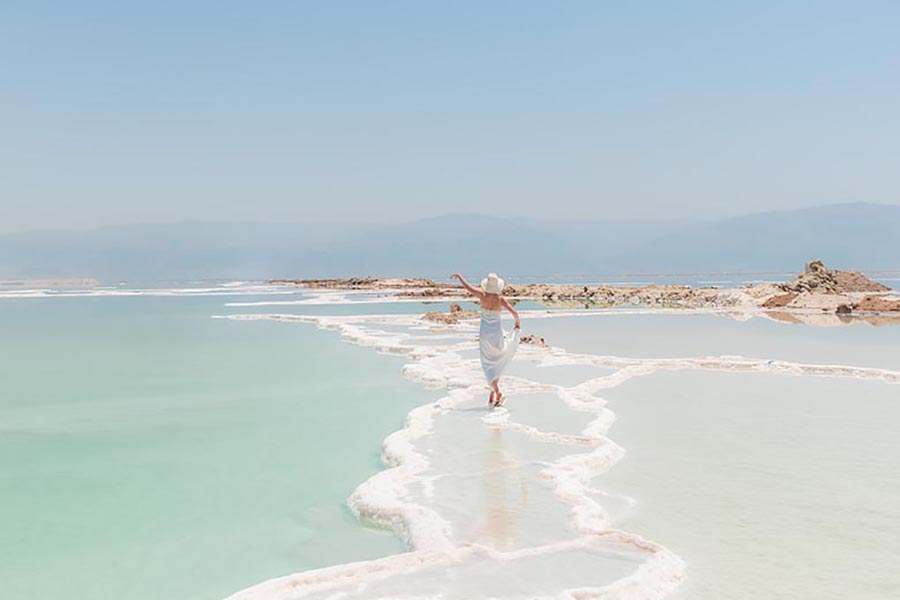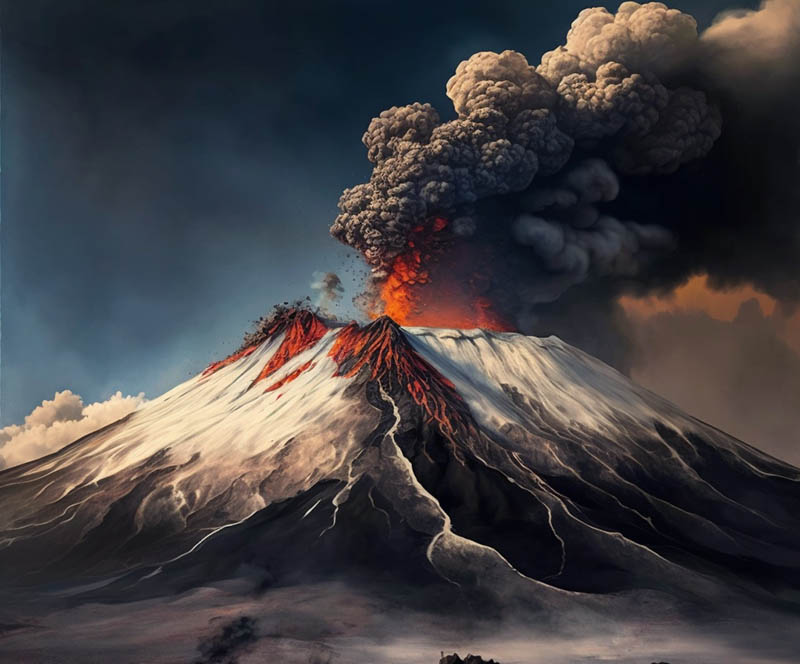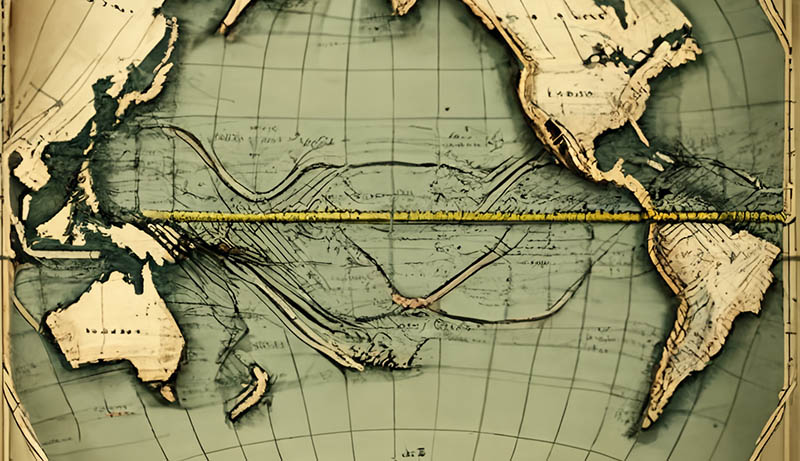The Dead Sea is a unique water body, there is no second such on Earth. Its waters have healing properties that have been known to mankind since ancient times.
- There are deposits of natural asphalt At the bottom of the Dead Sea. The water here is so dense that whole blocks of asphalt float on the surface. In Ancient Greece, this unique reservoir was even called the Asphalt Sea because of this! However, these deposits have already been depleted, and no one has seen asphalt here for a long time.
- Only the Jordan and Mujib rivers flow into the Dead Sea, plus several streams that dry up often. It may soon disappear since the volume of water entering it annually has decreased by 14 times over the past 100 years.
- Strictly speaking, the Dead Sea is only called a sea, but in fact, it is just a large closed lake. It is relatively large, its area is approximately 313 square miles (810 square km). For comparison, Lake Baikal is many times larger, as much as 12.248 square miles (31.722 square km). Baikal is the largest freshwater lake on Earth.
- The Dead Sea is the lowest-lying land area on Earth. It lies 1410 feet (430 meters) below sea level, so the atmospheric pressure here is slightly higher than normal, and the level of solar radiation is minimal.
- The salinity level here exceeds the average for the seas and oceans by 7-9 times. For example, in the Mediterranean Sea, it is about 40 ppm, and in the Dead Sea, it ranges from 270 to 310 ppm.
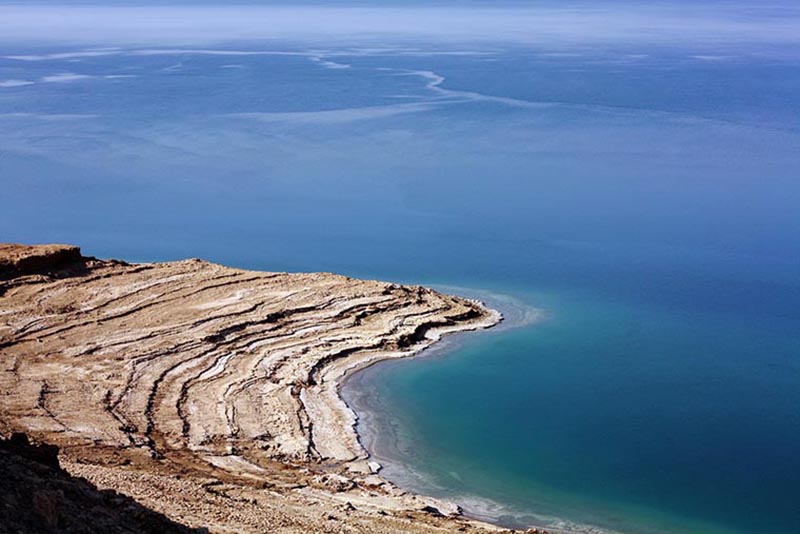
- There is absolutely no life in the Dead Sea since neither fish nor algae survive here due to the extreme salinity. Only certain types of bacteria are found here, they live only at the confluence of the Jordan with the sea because the water there is slightly less salty.
- Contrary to popular belief, it is very easy to drown in the Dead Sea. Despite the fact that the human body doesn’t sink into the water here, it is extremely difficult to swim here for the same reason. Imagine that inflatable rescue sleeves are tied to all your limbs, restricting movements.
- The composition of the salt here is quite different from the salt in other seas, there are few sulfates in it, but a lot of bromides. Thanks to this circumstance, the Dead Sea has become a unique place.
- Over the past 100 years, the water level here has fallen by 25 meters, and this process is accelerating. This is primarily because up to 80% of the water entering the sea is taken for agricultural and other needs. The drop in the water level here is about 1 meter per year nowadays.
- The high salt and mineral content of the Dead Sea mean that this reservoir has powerful healing properties. It’s a popular destination for treating skin problems such as acne, psoriasis, and cellulite, as well as muscle aches and arthritis.
- Silt therapeutic mud extracted here from the seabed is very popular. It is characterized by very high mineralization, and it really helps in some cases.
- The Dead Sea was well known to the Egyptians many thousands of years ago. In Ancient Egypt, the natural asphalt extracted here was used in the process of embalming the dead.
- The coast of the Dead Sea is divided between two countries, Israel and Jordan. But the state with limited recognition, Palestine, also claims part of it.
- The groundwater level around the Dead Sea decreased due to the damage to the ecology here, which led to the subsidence of the soil. In Israel and Jordan, there are already more than 1,200 sinkholes with a depth of more than 80 feet (25 meters) each.
- Due to the constant shallowing, the Dead Sea has long been divided into two parts, north, and south. The southern part of the sea is under the control of mineralogical plants exploiting it ruthlessly.
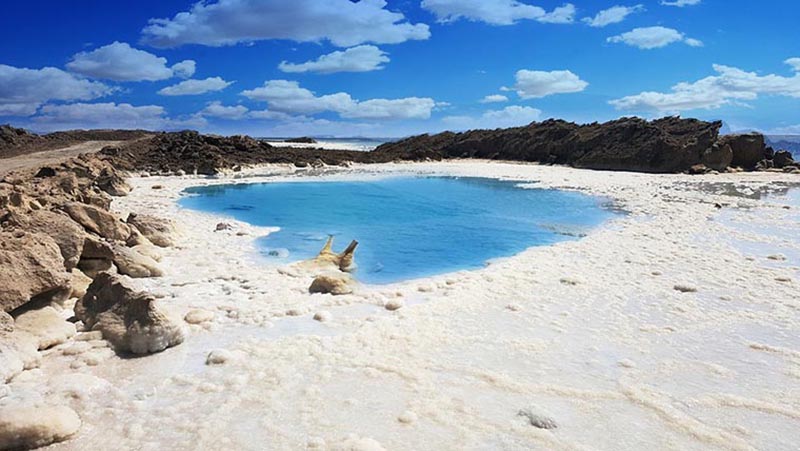
- Not a single river flows out of the Dead Sea, but it still shallows. Another reason for shallowing is the very low amount of precipitation in this region.
- The Dead Sea is cited in the Hebrew Bible during the rule of King David as a place where he sought refuge. This famous sea is also mentioned in other biblical books throughout history. The first tourist to visit the Dead Sea was most likely Abraham.
- The Israeli authorities, together with scientists from the United States, are developing a project to transfer water from the Red Sea to the Dead Sea to save this unique reservoir. They plan to build a huge canal that will connect them.
- The Dead Sea is the deepest of all the salt lakes in the world. Even now, despite the fact that it is fairly shallow, the maximum depth here reaches 1000 feet (300 meters).
- Over the past hundred years, the volume of water in it has halved. Previously, according to scientists, it reached 78 cubic miles (325 cubic km), and now it is estimated at only 35 cubic miles (147 cubic km).
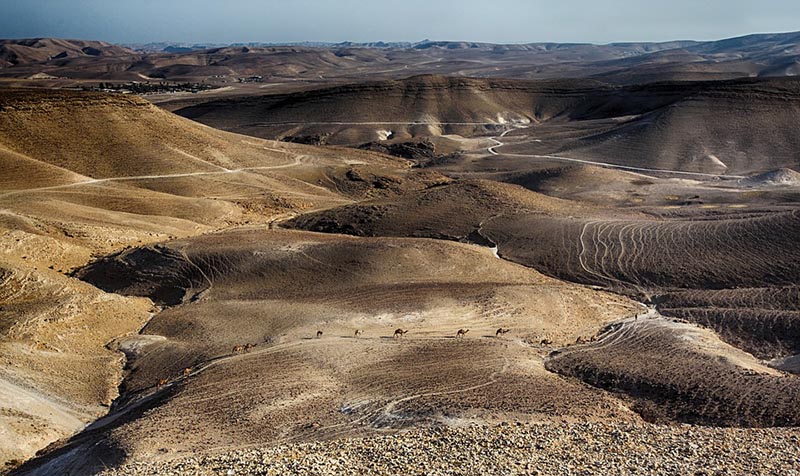
- You can stand on the banks of the Dead Sea in Jordan and gaze across for a view of Israel’s West Bank. And vice versa. However, it’s a myth that you can see Jerusalem or Tel Aviv from the banks of the Dead Sea. They are at least 62 miles (100 km) away.
- Salt crystals are easy to find here right on the shore. Moreover, the water in the Dead Sea is so salty that salt crystals are formed directly in it, not only on the seashore.
- The Dead Sea is one of the sunniest places on our planet. Every year there is an average of 330 sunny days there, and only 65 cloudy ones.
- Believe it or not, you can also dive in the Dead Sea! It takes unique diving skills, and those who possess them will enjoy spectacular geological salt formations.
- The Dead Sea was home to one of the most important discoveries in modern archaeology. In 1947, the Dead Sea Scrolls were found in 11 caves near the ruins of Qumran on its northwestern shore. These ancient manuscripts date from around 250 BC to 68 AD. They contain Biblical prayers and texts that have been key to our understanding of the beginnings of Christianity. Although the scrolls are now at the Israel Museum in Jerusalem, you can visit where they were found.
